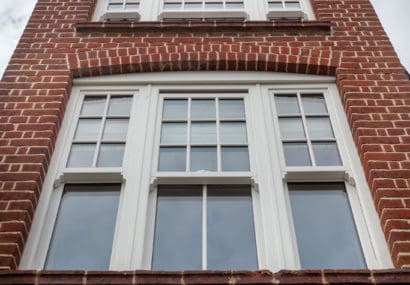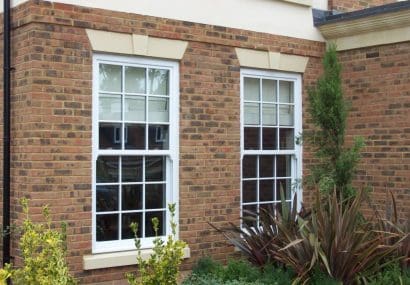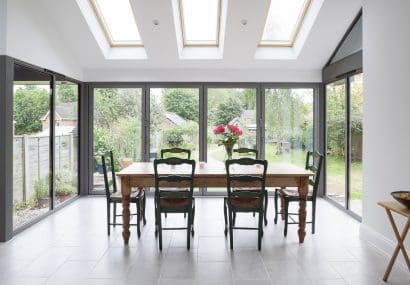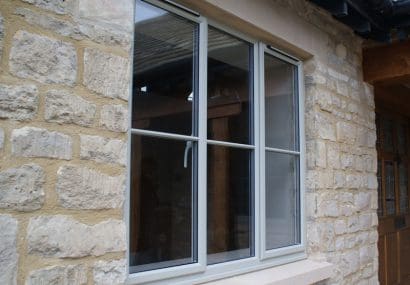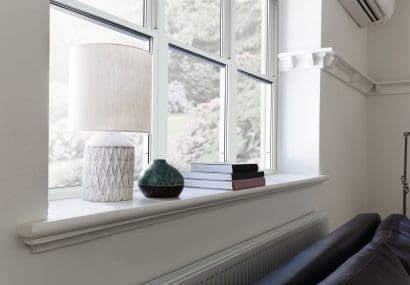What is PAS 24 and why does it matter?
Posted: 29th March 2023
PAS 24
PAS 24 is a standard of testing that measures the security performance of windows and doors in the UK. Under PAS 24 compliance, the windows and doorsets have met the minimum legal requirements for security and are suitable for domestic dwellings and commercial buildings exposed to comparable risk. Every window and door installed in a new build property must meet the requirements of PAS 24 (or an equivalent standard).
If you want to take the security on your project to the next level, look out for products that meet the requirements of SBD (Secured by Design). SBD is a police initiative that works to improve the security of buildings.
In this article, we’ll look at both standards and explain what they mean for you and your project.
What are PAS 24 doors and PAS 24 windows?
PAS stands for Publicly Available Specification. It’s a product benchmark that helps you choose products that meet an industry standard.
PAS 24 relates to the security of windows and doors.
PAS 24 windows or PAS 24 doors have been independently tested for their security credentials. The tests assess the ability of the door or window to resist the type of attack normally associated with casual or opportunistic burglars.
The tests are a simple pass or fail. Windows and doors are either meet the requirements of PAS 24 or they don’t.
PAS 24 standards are regularly updated as the industry advances and quality increases. The latest standard (as at March 2023) is PAS 24: 2022. Before that, it was PAS 24: 2016.
When specifying PAS 24 windows or PAS 24 doors, make sure your contractor uses products that meet the most up-to-date specifications – PAS 24: 2022.
How do you check windows and doors have a PAS 24 certificate?
To achieve a PAS 24 certificate, windows and doorsets (i.e. the door, its frame and its hardware) must be independently tested by certified accreditation organisations such as UKAS (the United Kingdom Accreditation Service). This ensures all products are tested to the same industry standards so you can have confidence in the result.
In most cases, windows and doors need to meet PAS 24 requirements. You will therefore often find that fabricators and installers will promote PAS 24 certification in their sales and marketing materials.
Your window and door manufacturer will be able to provide you with copies of PAS 24 certificates for your chosen products if required.
What is the SBD (Secured by Design) police initiative?
Secured by Design (SBD) is the official police security initiative that works to improve the security of buildings and their immediate surroundings to provide safe places to live, work, shop and visit.
The Secured by Design logo and the ‘Police Preferred Specification’ indicates that a company or a product meets the high standards set by Secured by Design.
PAS 24 accreditation is typically a baseline requirement for achieving SBD standards. However, the testing requirements of SBD go beyond the standards and requirements of PAS 24. Products are tested and re-tested over time. Inspections of the manufacturer’s production facility are also required to ensure the correct processes are maintained over time.
As such, SBD and Police Preferred Specification status provide an additional layer of reassurance when the security on your project is a priority.
Mercury Glazing is a Secured by Design member company. This means we have been tested to and passed security standards specified by SBD on our PVC-U Sash Windows.
Security standards with Mercury Glazing
When you choose Mercury Glazing as your window and door supplier, you can rest assured you’re choosing a company committed to supplying products that meet the highest standards of security.
All of our PVC-U sash windows meet the requirements of PAS 24. Plus, as a Secured by Design member company, we can add an additional layer of security by offering a Secured by Design upgrade on our PVC-U sash windows too.
It’s just another example of the Mercury difference.
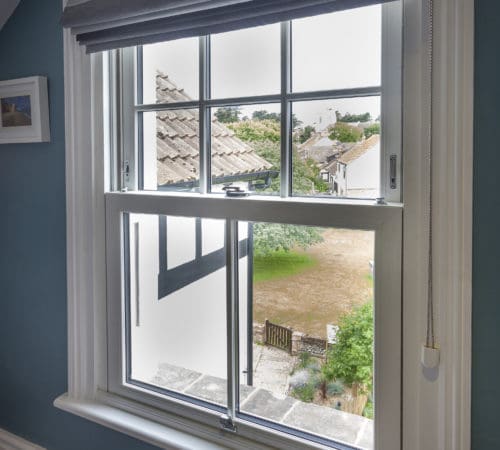
PAS24 FAQs
How is the weather resistance test conducted on doors?
To conduct the weather resistance test, the door undergoes a comprehensive process. First, it is subjected to varying levels of air pressure in a pressure chamber. This simulates the force of wind pressing against the door. By doing so, the door’s ability to withstand typical wind pressures can be assessed. Following the air pressure test, the exterior face of the door is then subjected to a jet of water. This process is aimed at evaluating the door’s water tightness. Any leakages that occur during this step are carefully checked to determine the effectiveness of the door in keeping water out. Through these procedures, the weather resistance test ensures that the door is capable of withstanding different weather conditions, including wind pressure and water exposure. This comprehensive assessment guarantees that the door will provide effective protection against harsh weather elements in real-world applications.
What is the purpose of the weather resistance test for doors?
The weather resistance test for doors serves the purpose of ensuring the door’s ability to withstand different weather conditions. This test involves subjecting the door to varying levels of air pressure, simulating the force of wind pressing against it. By doing so, the test evaluates the door’s ability to resist wind pressure and maintain its structural integrity. Additionally, the test also involves spraying a jet of water onto the exterior face of the door to check for any leakages, ensuring that it is water-tight. In summary, the weather resistance test aims to determine the door’s ability to withstand wind and water, thereby guaranteeing its durability and efficiency in various weather conditions.
What tools are provided for the engineer during the manual test?
During the 15-minute manual intervention test conducted by the engineer to simulate a break-in, the British Standards Institution (BSI) provides a set of tools specifically for this purpose. The engineer is allowed to use these tools in their attempt to break into the door. One of the tools provided is a cut through tool, which is utilised to determine whether the blade can create a hole of significant size in the door. The engineer will be testing two distinct zones of the door: zone one, spanning within 400mm vertically on either side of the lock, and zone two, encompassing the remaining portion of the door. It is crucial to note that each test within this manual intervention lasts for a duration of three minutes. The door is considered to have failed if the blade of the cut through tool creates a hole with a diameter exceeding 50mm during this time.
How long does the engineer have to perform the manual test?
The engineer is allotted a timeframe of 15 minutes to conduct a comprehensive manual examination of both the door’s strength and the security provided by the lock cylinder.
What methods are used during the manual test to simulate a break-in?
During the manual test to simulate a break-in, the engineer employs various methods to assess the strength and security of the door and lock cylinder. The engineer begins by using common lock breaking techniques such as mole gripping, aimed at testing the durability of the lock. Additionally, the engineer conducts a manual intervention test, which allows them 15 minutes to attempt breaking into the door using tools provided by the BSI (British Standards Institution).
To evaluate the door’s resistance to unauthorised access, a cut-through tool is employed. This tool is specifically designed to examine if the blade can create a hole of significant size on the door. The test is conducted in two designated zones: Zone One refers to any part of the door within 400mm vertically on either side of the lock, while Zone Two encompasses all other areas of the door.
Each test is conducted for a duration of three minutes, and the door is deemed to have failed if the blade manages to create a hole with a diameter exceeding 50mm. By performing these comprehensive tests, the engineer can thoroughly assess the door’s vulnerability to various manual intrusion methods.
What is the purpose of the manual test for doors?
The purpose of the manual test for doors is to assess the strength and security of the door and lock cylinder. A qualified engineer is given a set time of 15 minutes to conduct a series of tests that simulate common lock breaking methods used by potential intruders. The engineer is provided with tools specified by the BSI to attempt to gain unauthorised access to the door. This manual intervention test aims to evaluate the door’s resistance against forced entry.
How is the hard impact test conducted?
The hard impact test is conducted to evaluate the resistance of the doors’ individual components to shock forces. This test involves the use of a metal battering ram attached to a pendulum. The ram, weighing 50kg, is pulled back and released three times. It is designed to mimic the door being struck with a concentrated force.
During the test, the pendulum is pulled back, applying potential energy to the ram. The ram is then released and swings downward towards the door. It strikes the door with a force that is intended to simulate a strong impact. To ensure consistency, the ram is dropped from a set height of 800mm above its resting position.
By subjecting the door to repeated impacts from the ram, this test aims to assess the durability of the door’s components. It helps to determine whether the door can withstand concentrated forces and continue to function as intended without any structural or functional damage. Through this rigorous testing process, the effectiveness of the door in withstanding impacts is thoroughly evaluated.
What is the purpose of the hard impact test for doors?
The purpose of conducting a hard impact test for doors is to assess the ability of the door’s individual components to withstand and absorb shock forces.
How is the solid impact test conducted?
The solid impact test is conducted to assess the resistance of the door to shock forces. This test involves a sand-filled leather bag weighing 30kg that is dropped in a pendulum motion three times. The purpose of using a sand bag is to simulate the impact of a uniformed force across a wide area of the door, replicating a scenario where the door is struck. The bag is dropped from a height of 800mm above its resting position, simulating a significant impact force. This test is designed to evaluate the door’s ability to withstand shocks and determine its general shock resistance.
What is the purpose of the solid impact test for doors?
The solid impact test for doors serves the purpose of evaluating the door’s ability to withstand shock forces. This is achieved by replicating the impact of a sand-filled leather bag in a pendulum motion. The bag, weighing 30kg, is dropped from a height of 800mm, simulating a uniform force that strikes a wide area of the door. By subjecting the door to this test, its overall shock resistance can be assessed and determined.
How is the force applied during the mechanical loading test?
During the mechanical loading test, a perpendicular force of 450kg is exerted on each piece of hardware. The edges of the door are pulled in opposite directions using a series of hooks while simultaneously pushing the opening sash with a hydraulic press. To ensure there are no weak spots, this action is repeated on multiple points of the door. The force is applied gradually over a period of 20-30 seconds without any sudden impact. Additionally, after this initial test, an additional 100kg force is applied using the hydraulic press to further push against the already tested frame. This comprehensive process ensures that the force is applied thoroughly and consistently during the mechanical loading test.
What force is applied during the mechanical loading test?
During the mechanical loading test, a perpendicular force of 450kg is applied to each piece of hardware. The test involves pulling the edges of the door in opposite directions using hooks, as well as exerting pressure on the opening sash using a hydraulic press. Multiple points on the door are subjected to this action to ensure that there are no weak or vulnerable areas.
What is the purpose of the mechanical loading test for doors?
The purpose of the mechanical loading test for doors is to thoroughly assess the door’s strength and security. This test involves applying forces to various points on the door, including the profile pieces, locking mechanism, and other security features. By subjecting these components to a force of 450kg perpendicular to each hardware piece and pulling the edges in opposite directions with hooks, the test aims to determine whether the door can withstand prying attempts. Additionally, a hydraulic press pushes on the opening sash, further examining its resilience. Furthermore, a force of 100kg is applied to the already tested frame to assess its ability to withstand additional pressure. Through this comprehensive evaluation, the mechanical loading test helps identify any potential vulnerable areas that could compromise the door’s strength and security.
What is Approved Document Q?
Approved Document Q is a set of guidelines that came into effect in October 2015 in England. It complements the existing Q1 of Schedule 1 to the Building Regulations 2010. The purpose of Approved Document Q is to ensure the security of dwellings by requiring new build properties to be capable of resisting unauthorized access to both the dwelling itself and any part of the building that could provide access to a flat within it. In order to meet the requirements of Building Regulations, doors and windows must comply with PAS 24:2022 standards or similar standards that guarantee their security.
Is PAS 24 a legal requirement?
Yes, PAS 24 or an equivalent standard is a legal requirement in order to meet Building Regulations for new build properties.
Is PAS 24 the same as Secured By Design?
In most cases, PAS 24 accreditation is typically a baseline requirement for achieving SBD standards. However, the testing requirements of SBD go beyond the standards and requirements of PAS 24. Products are tested and re-tested over time. Inspections of the manufacturer’s production facility are also required to ensure the correct processes are maintained over time.
To provide a more thorough understanding, it is important to note that Secured by Design (SBD) is an initiative that organises accreditation for products on behalf of the Police. While PAS 24 and Secured by Design are independent of each other, SBD products must meet PAS 24 standards as a minimum requirement, in addition to fulfilling other SBD specifications. This indicates that while PAS 24 accreditation is crucial, it is not synonymous with Secured by Design.
Therefore, SBD and Police Preferred Specification status provide an additional layer of reassurance when prioritising security for your project. SBD not only requires adherence to PAS 24 standards but also imposes further testing and inspection processes to ensure ongoing compliance and the maintenance of correct manufacturing procedures. This comprehensive approach enhances the level of security provided by SBD-accredited products, making them a reliable choice for crime prevention
Back to news
